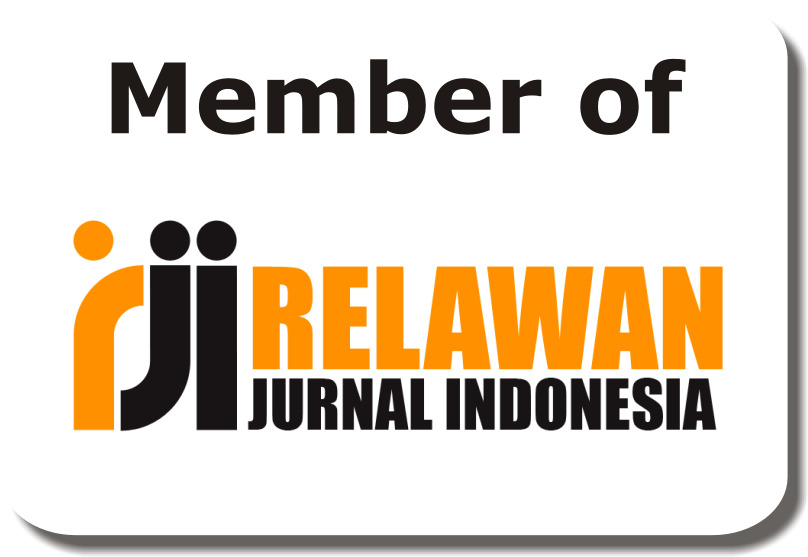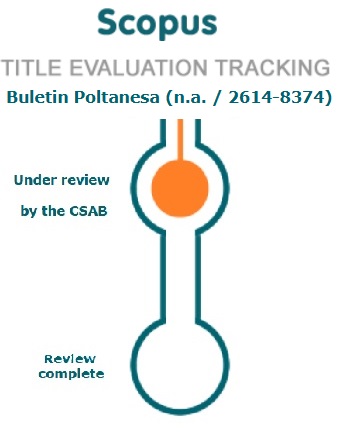Analysis of Weed Vegetation on Ex-Burned Oil Palm Plantation Land
DOI:
https://doi.org/10.51967/tanesa.v26i1.3356Keywords:
Weed, Analysis Vegetation, Oil Palm, Ex-Burned LandAbstract
Weeds frequently present challenges in agricultural settings, leading to crop damage and diminished yields. The size of the current weed population is often closely linked to these issues. The primary factor at play is the competition between crops and weeds for space, nutrients, and light essential for growth. Given that weeds are considered undesirable, their control represents a significant area of focus. A method to assess effective weed control strategies involves vegetation analysis, offering insights into weed distribution and density. The data aids in formulating an effective control strategy to reduce the adverse effects of weeds on oil palm yield. This investigation seeks to analyze the composition and structure of weeds, as well as evaluate the efficacy of weed control measures on ex-burned land. This study employs field surveys to catalog the types and quantities of individual weeds, alongside vegetation analysis to assess weed structure through relative density, frequency, and dominance metrics. The findings revealed a total of 275 distinct weed compositions, encompassing 15 species across 10 families. The prevalent weed species identified included Eleocharis dulcis, Paspalum conjugatum, and Fimbristylis miliacea. The density, frequency, and dominance values of these three weeds were notably high. The weed diversity index in the peatland was measured at 2.13, indicating a high classification. The approach to weed management involves an integration of both physical and chemical techniques.
References
Adriadi, A., Chairul, & Solfiyeni. (2012). Vegetation analysis of weed in palm oil plantation (Elaeis quineensis Jacq.) in Kilangan, Muaro Bulian, Batang Hari. Jurnal Biologi Universitas Andalas (J. Bio. UA.), 1(2), 108–115. https://doi.org/https://doi.org/10.25077/jbioua.1.2.%25p.2012
Afrianti, I., Yolanda, R., Purnama, A. A., Studi, P., Biologi, P., Pengaraian, U. P., & Vegetasi, A. (2015). ANALISIS VEGETASI GULMA PADA PERKEBUNAN KELAPA SAWIT (Elaeis quinensis Jacq.) di DESA SUKA MAJU KECAMATAN RAMBAH KABUPATEN ROKAN HULU. Jurnal Mahasiswa Prodi Biologi UPP, 1(1). http://download.garuda.kemdikbud.go.id/article.php?article=399731&val=8752&title=ANALISIS VEGETASI GULMA PADA PERKEBUNAN KELAPA SAWIT Elaeis quinensis Jacq di DESA SUKA MAJU KECAMATAN RAMBAH KABUPATEN ROKAN HULU
Asbur, Y., Purwaningrum, Y., & Ariyanti, M. (2020). Vegetation Composition and Structure under Mature Oil Palm (Elaeis guineensis Jacq.) Stands. Icmr 2018, 254–260. https://doi.org/10.5220/0008888302540260
Awan, T. H., Ahmed, S., Cruz, P. C. S., & Chauhan, B. S. (2022). Ecological studies for plant characteristics of Fimbristylis miliacea under multiple resource limitations in dry-seeded upland ecosystems. International Journal of Pest Management, 68(3), 256–266. https://doi.org/10.1080/09670874.2020.1831648
Cowie, B. W., Venter, N., Witkowski, E. T. F., Byrne, M. J., & Olckers, T. (2018). A review of Solanum mauritianum biocontrol: prospects, promise and problems: a way forward for South Africa and globally. BioControl, 63(4), 475–491. https://doi.org/10.1007/s10526-017-9858-0
Dahliani, L., & Elban, S. (2019). The Dominant Weed Type In Three Areas Of Mature Palm Oil On Peatland. Proceedings of the Proceedings of the 1st International Conference on Engineering, Science, and Commerce, ICESC 2019, 18-19 October 2019, Labuan Bajo, Nusa Tenggara Timur, Indonesia. https://doi.org/10.4108/eai.18-10-2019.2289969
Dilipkumar, M., Chuah, T. S., Goh, S. S., & Sahid, I. (2020). Weed management issues, challenges, and opportunities in Malaysia. Crop Protection, 134, 104347. https://doi.org/10.1016/j.cropro.2017.08.027
Direktorat Statistik Tanaman Pangan, H. dan P. (2023). Statistik Kelapa Sawit Indonesia 2022 (H. dan P. Direktorat Statistik Tanaman Pangan (ed.); Vol. 16). Badan Pusat Statistik.
Firmansyah, E., & Pusparani, S. (2019). Weed vegetation analysis in Universitas Perjuangan of Tasikmalaya. Journal of Physics: Conference Series, 1179(1), 0–5. https://doi.org/10.1088/1742-6596/1179/1/012132
Gunawan, B. Y. I. (2025). Ekspor Sawit dan Turunannya Turun 11 , 78 % Menjadi US $ 20 Miliar Sepanjang 2024. https://sawitindonesia.com/ekspor-sawit-dan-turunannya-turun-1178-menjadi-us20-miliar-sepanjang-2024/
Krisnarini, Yatmin, & Setiawan. (2020). Pertumbuhan Bibit Karet (Heava brasiliensis Muell Arg) Akibat Pengaruh Negatif Alelokimia Pada Berbagai Media Tanam. Lansium, 1(2), 1–10.
Linders, T. E. W., Schaffner, U., Eschen, R., Abebe, A., Choge, S. K., Nigatu, L., Mbaabu, P. R., Shiferaw, H., & Allan, E. (2019). Direct and indirect effects of invasive species: Biodiversity loss is a major mechanism by which an invasive tree affects ecosystem functioning. Journal of Ecology, 107(6), 2660–2672. https://doi.org/10.1111/1365-2745.13268
McCarthy, B. C., & Magurran, A. E. (2004). Measuring Biological Diversity. Journal of the Torrey Botanical Society, 131(3), 277. https://doi.org/10.2307/4126959
Morla, K. A. A., Padilla, C. O., & King Donayre, D. M. (2022). Influence of Fimbristylis Miliacea (L.) Vahl on Growth and Yield of Bulb Onion (Allium Cepa L.). Rice-Based Biosystems Journal, 10(1), 1–10.
Nasution, A. A., Sopandie, D., & Lontoh, A. P. (2024). Pengelolaan Gulma Kelapa Sawit (Elaeis guineensis Jacq.) di Kebun Negeri Lama Selatan, Sumatera Utara. Buletin Agrohorti, 12(1), 1–12. https://doi.org/10.29244/agrob.v12i1.51386
Nufvitarini, W., Zaman, S., & Junaedi, A. (2016). Pengelolaan Gulma Kelapa Sawit (Elaeis guineensis Jacq.) Studi Kasus di Kalimantan Selatan. Buletin Agrohorti, 4(1), 29–36. https://doi.org/10.29244/agrob.v4i1.14997
Permatasari, N., Same, M., Sari, R. P. K., & Fauziah, L. K. (2023). Analysis of Weed Vegetation in Robusta Coffee (Coffea robusta L.) Traditional Farm at Pesawaran, Lampung. Jurnal Biologi Tropis, 23(4), 67–75. https://doi.org/10.29303/jbt.v23i4.5422
Rembold, K., Mangopo, H., Tjitrosoedirdjo, S. S., & Kreft, H. (2017). Plant diversity, forest dependency, and alien plant invasions in tropical agricultural landscapes. Biological Conservation, 213, 234–242. https://doi.org/10.1016/j.biocon.2017.07.020
Reynolds, L. V., & Cooper, D. J. (2010). Environmental tolerance of an invasive riparian tree and its potential for continued spread in the southwestern US. Journal of Vegetation Science. https://doi.org/10.1111/j.1654-1103.2010.01179.x
Rojas-Sandoval, J. (2018). Paspalum conjugatum (buffalo grass). In CABI Compendium. https://doi.org/10.1079/cabicompendium.38951
Ruwanza, S. (2021). Effects of Solanum mauritianum Scopoli (bugweed) invasion on soil and vegetation in Vhembe Biosphere Reserve, South Africa. Austral Ecology, 46(3), 342–348. https://doi.org/10.1111/aec.12999
Ruwanza, S., & Shackleton, C. M. (2016). Effects of the invasive shrub, Lantana camara , on soil properties in the Eastern Cape, South Africa. Weed Biology and Management, 16(2), 67–79. https://doi.org/10.1111/wbm.12094
Santosa, L. F., Sudarno, & Zaman, B. (2021). Potential of local plant Eleocharis dulcis for wastewater treatment in constructed wetlands system: review. IOP Conference Series: Earth and Environmental Science, 896(1), 012030. https://doi.org/10.1088/1755-1315/896/1/012030
Satriawan, H., & Fuady, Z. (2019). Short communication: Analysis of weed vegetation in immature and mature oil palm plantations. Biodiversitas, 20(11), 3292–3298. https://doi.org/10.13057/biodiv/d201123
Sholto‐Douglas, C., Shackleton, C. M., Ruwanza, S., & Dold, T. (2017). The Effects of Expansive Shrubs on Plant Species Richness and Soils in Semi‐arid Communal Lands, South Africa. Land Degradation & Development, 28(7), 2191–2206. https://doi.org/10.1002/ldr.2745
Sumbari, C., & Dwipa, A. A. I. (2019). Succession of Plant Spesies Following a Forest Fire on Mount Talang, West Sumatera. International Journal of Environment, Agriculture and Biotechnology, 4(1), 15–19. https://doi.org/10.22161/ijeab/4.1.3
Suwinda, R., Warnita, W., Chaniago, I., & Irfan, Z. (2019). Effect Inhibitor Packlobutrazol of Against Type and Summed Dominance Ratio (SDR) Weeds in Potato (Solanum tuberosum L.) Plant. International Journal of Environment, Agriculture and Biotechnology, 4(5), 1579–1583. https://doi.org/10.22161/ijeab.45.45
Umami, W., & Mandili, I. (2023). Pengaruh Ekstrak Sembung Rambat terhadap Nilai Indeks Kompetisi Gulma dan Diameter Bibit Kelapa Sawit. AGRIUM: Jurnal Ilmu Pertanian, 26(2), 163–167. https://doi.org/10.30596/agrium.v26i2.16278
Utomo, B. (2013). The Role of Crown Gap and Soil Seed Bank On Forest Regeneration. Jurnal Agrista, 17(2), 78–85.
van Wilgen, B. W., Measey, J., Richardson, D. M., Wilson, J. R., & Zengeya, T. A. (2020). Biological Invasions in South Africa: An Overview. In Biological Invasions in South Africa (pp. 3–31). Springer International Publishing. https://doi.org/10.1007/978-3-030-32394-3_1
Yuliana, A. I., & Ami, M. S. (2020). Analisis Vegetasi dan Potensi Pemanfaatan Jenis Gulma Pasca Pertanaman Jagung. Jurnal Agroteknologi Merdeka Pasuruan, 4(2), 20–28. http://jamp-jurnal.unmerpas.ac.id/index.php/jamppertanian/article/download/47/46
Zhang, Y., Xu, H., Hu, Z., Yang, G., Yu, X., Chen, Q., Zheng, L., & Yan, Z. (2022). Eleocharis dulcis corm: phytochemicals, health benefits, processing and food products. Journal of the Science of Food and Agriculture, 102(1), 19–40. https://doi.org/10.1002/jsfa.11508
Downloads
Published
How to Cite
Issue
Section
License
Copyright (c) 2025 Buletin Poltanesa

This work is licensed under a Creative Commons Attribution-ShareAlike 4.0 International License.
The copyright of this article is transferred to Buletin Poltanesa and Politeknik Pertanian Negeri Samarinda, when the article is accepted for publication. the authors transfer all and all rights into and to paper including but not limited to all copyrights in the Buletin Poltanesa. The author represents and warrants that the original is the original and that he/she is the author of this paper unless the material is clearly identified as the original source, with notification of the permission of the copyright owner if necessary.
A Copyright permission is obtained for material published elsewhere and who require permission for this reproduction. Furthermore, I / We hereby transfer the unlimited publication rights of the above paper to Poltanesa. Copyright transfer includes exclusive rights to reproduce and distribute articles, including reprints, translations, photographic reproductions, microforms, electronic forms (offline, online), or other similar reproductions.
The author's mark is appropriate for and accepts responsibility for releasing this material on behalf of any and all coauthor. This Agreement shall be signed by at least one author who has obtained the consent of the co-author (s) if applicable. After the submission of this agreement is signed by the author concerned, the amendment of the author or in the order of the author listed shall not be accepted.








